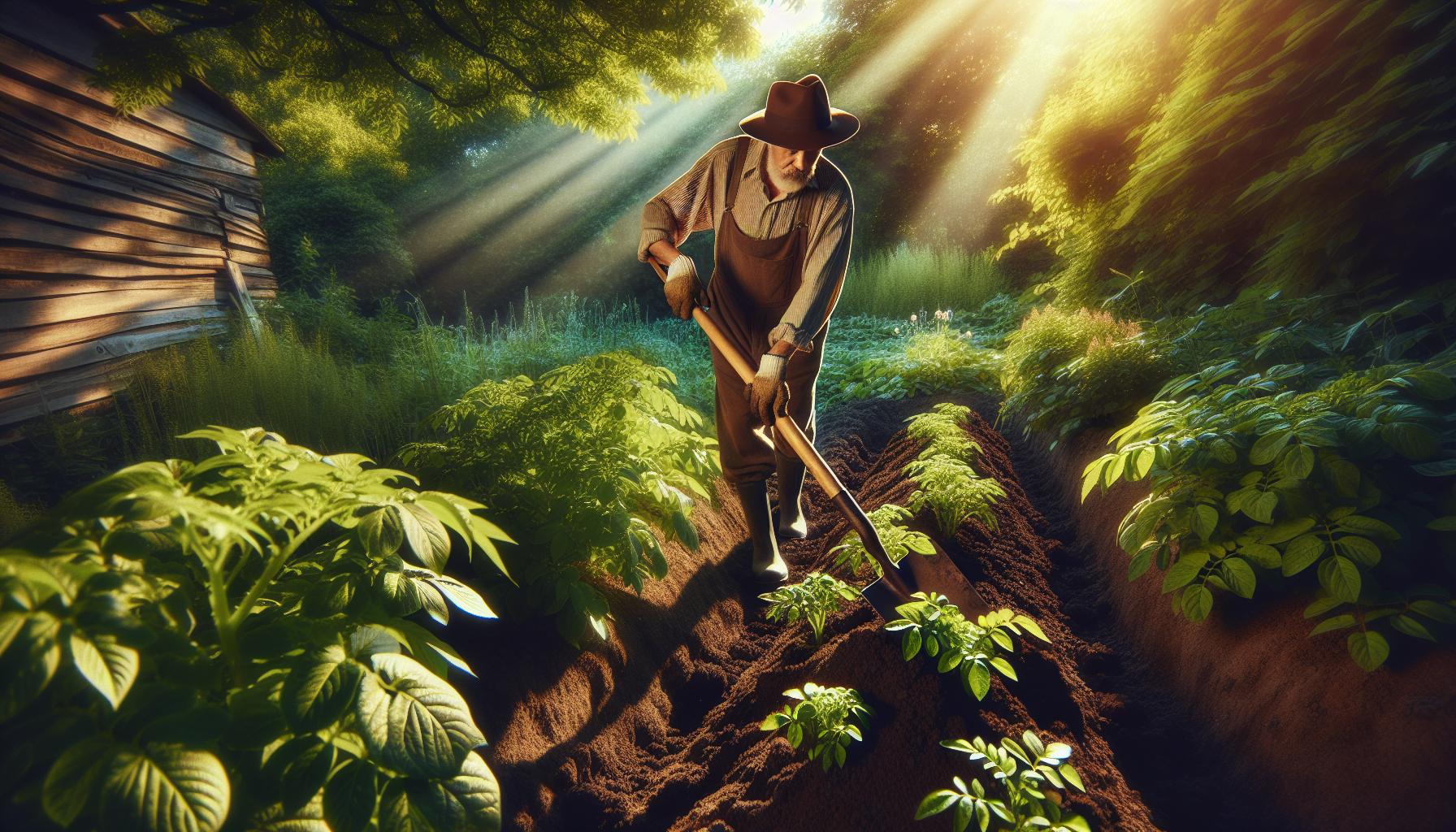Growing potatoes is a rewarding try that even novice gardeners can master. Did you know one seed potato can yield a bountiful harvest? In this text, I’ll guide you through the essentials of planting, earthing up, and maintaining your potato plants. From the right spacing for different potato types to tips on keeping your soil weed-free and well-watered, you’ll find everything you need to grow a successful crop. Whether you’re planting in the ground, a raised bed, or even a bag on your balcony, these practical steps will ensure your potatoes thrive.
Steps for Growing Potatoes
Choosing the Right Potato Variety
Choosing the right potato variety matters. There are over 100 types of potatoes, each varying in skin color, flesh color, and size. You’ll find large ones and fingerlings. Floury types, like Russets, are perfect for roasting or mashing. Firm, waxy potatoes, such as Red Bliss, work great boiled or in salads. When selecting a variety, consider what dishes you plan to make.
Preparing the Soil
Preparing the soil correctly sets the foundation for a good harvest. Potatoes prefer loose, well-drained soil, ideally with a pH of 5.8 to 6.5. Hard or compacted soil can lead to misshapen tubers. In the fall, I mix compost or organic matter into the soil. This enriches the soil and helps with drainage. If you’re using containers, select a high-quality potting mix fortified with organic matter.
Planting Techniques
Planting techniques play a crucial role in potato growth. Potatoes should be started in the cool season and grown into the warm season. I plant them 30 days before the last frost, which is usually in April here in Ohio. Ensure your seed potatoes have sprouts by placing them in a sunny area with temperatures between 60 and 70°F a week or two before planting.
For seed potatoes smaller than 2 inches, plant them whole. Larger ones need to be cut into 2-inch pieces, each with an eye or bud. Allow the cut pieces to callous over a day before planting to prevent rot. Plant pieces 6 inches apart and 4 inches deep in rows spaced 12 inches apart. Cover with soil and water thoroughly. Use a soaker hose to water the soil without wetting the leaves, as wet foliage can encourage bacterial growth.
Following these steps can help you achieve an abundant potato harvest, whether in the ground, raised beds, or containers. Remember, the right variety, soil preparation, and planting techniques all contribute to successful potato growth.
Managing Potato Growth

Watering and Fertilization Practices
Watering potatoes correctly is crucial for healthy growth. I water my potato plants deeply but infrequently. It’s best to water early in the morning so the soil has time to dry before nightfall. For fertilization, I use a balanced fertilizer high in phosphorus and potassium. Phosphorus promotes root development, while potassium enhances tuber growth. Avoid high-nitrogen fertilizers, as they encourage excessive foliage at the expense of tubers.
Combating Pests and Diseases
Effective pest and disease management can save your crop from damage. To combat Colorado potato beetles, I handpick beetles, use straw mulch, and rotate crops annually to disrupt their life cycle. With flea beetles, I use row covers and invite beneficial insects by adding native plants. For leafhoppers, I spray water on leaf undersides to knock off nymphs. I also cut down potato plants at the first sign of potato blight to prevent tuber infection.
The Importance of Hilling
Hilling is essential for maximizing potato yield. As the plants grow, I add more soil around the base, usually when they reach about 6 inches (15 cm) in height. This process, known as earthing up, helps protect tubers from sunlight exposure, which can cause them to turn green and produce toxic solanine. Hilling also supports the plants, encourages more tubers, and improves drainage.
Harvesting and Storage

Knowing When to Harvest
Harvest potatoes at the right time for best results. Early-season potatoes mature in 60 to 80 days and are ready by early summer. Midseason potatoes, also known as Second Earlies, take 80 to 100 days to mature and are typically ready from mid-summer to late summer. Late crops mature in 100 to 130 days and are best for storage, harvested in fall.
To check if potatoes are mature, dig up a test hill. Mature potatoes have thick skins that are firmly attached to the flesh. If skins are thin and rub off easily, leave them in the ground a few more days.
Techniques for Digging Up Potatoes
When it’s time to dig up potatoes, use a sturdy fork to reduce damage. Start by digging up a test hill to check maturity. If mature, carefully dig around each plant to avoid cutting the tubers. Dig up the entire plant and gently lift the potatoes. If the soil is very wet, let potatoes air dry as much as possible before storing.
Avoid harvesting after heavy rainfall as this can increase the risk of rot. If the weather is dry, let the potatoes lay unwashed in the field for 2 to 3 days. This curing step is essential for good storage.
Curing and Storing Your Potatoes Safely
After digging up, cure potatoes to ensure long-term storage. Allow them to lay in the field for 2 to 3 days if the weather is dry. If harvesting during wet weather, cure potatoes in a dry, protected area like a garage or covered porch. Ensure the place is well-ventilated.
Store only undamaged, disease-free potatoes. Before putting them in storage, trim any small green spots but discard potatoes with significant greening. Check stored potatoes every few weeks and remove any that are starting to spoil to prevent problems.
In suitable conditions, late-season potatoes can store for 2 to 3 months. Opt for an area with good ventilation and a cool temperature to keep them fresh longer.
Conclusion
Growing potatoes can be a deeply satisfying try that rewards you with a plentiful harvest. By focusing on essential steps like proper planting, earthing up, and diligent maintenance, you’ll set the stage for a successful crop. Remember to choose the right variety, prepare your soil well, and manage watering and fertilization effectively. Combat pests and diseases proactively and ensure you harvest and store your potatoes correctly. With attention to detail and a bit of patience, you’ll enjoy fresh, homegrown potatoes that are both delicious and nutritious. Happy gardening!

